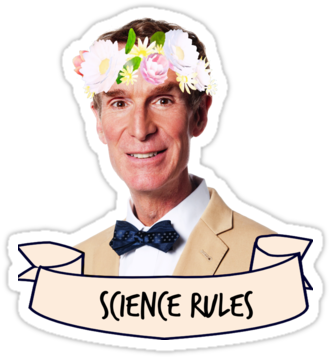Say it in English grammar "GREATER than" means greater number first. And vice versa.
Science Memes
Welcome to c/science_memes @ Mander.xyz!
A place for majestic STEMLORD peacocking, as well as memes about the realities of working in a lab.

Rules
- Don't throw mud. Behave like an intellectual and remember the human.
- Keep it rooted (on topic).
- No spam.
- Infographics welcome, get schooled.
This is a science community. We use the Dawkins definition of meme.
Research Committee
Other Mander Communities
Science and Research
Biology and Life Sciences
- [email protected]
- [email protected]
- [email protected]
- [email protected]
- [email protected]
- [email protected]
- [email protected]
- [email protected]
- [email protected]
- [email protected]
- [email protected]
- [email protected]
- [email protected]
- [email protected]
- [email protected]
- [email protected]
- [email protected]
- [email protected]
- [email protected]
- [email protected]
- [email protected]
- [email protected]
- [email protected]
- [email protected]
- !reptiles and [email protected]
Physical Sciences
- [email protected]
- [email protected]
- [email protected]
- [email protected]
- [email protected]
- [email protected]
- [email protected]
- [email protected]
- [email protected]
Humanities and Social Sciences
Practical and Applied Sciences
- !exercise-and [email protected]
- [email protected]
- !self [email protected]
- [email protected]
- [email protected]
- [email protected]
Memes
Miscellaneous
MesseR Rechts, GabeL Links.
Every single time when setting up dishes on the table.
Directions are one of the most confusing aspect tbh. Bounding is difficult..
I earned it as the larger part being on the side of the bigger number
.<:
One of my favorite teachers taught computers and pointed out that the less than symbol is towards the side of the keyboard with smaller numbers.
Crocodile want to eat cactus ?
Surely in theoretical physics, the most common use of > is in a ket (eg. |ψ>).
No? Not everyone's doing work on quantum systems. Far from it. Most people do not need to use Dirac notation.
I guess not. Its just that when I hear 'theoretical physics' I immediately think of particle physics (and related fields). I have this idea that in most branches of physics people just say the topic, eg. astronomy, material sciences, or whatever; and don't usually specify whether they are doing theoretical work or experimental/empirical work. But in particle physics ... my impression is that people are more likely to specify. Anyway, that's just my own bias I guess.
arguably, it's |ψ〉, which is not the same as >
wow that's a big difference (I have no idea what you are talking about)
It is just a notation for linear algebra and linear operators on complex vector spaces together with their dual space both in the finite-dimensional and infinite-dimensional case. Really quite simple stuff actually...
smiles and nods, smiles and nods...
I think 〉 means a very hungry (or at least large mouthed) crocodile, and > is just a normal one.
<3 is "less than three", and 3 is "three" so logically < is "less than"
I try this, but I always get <3 mixed up with Ɛ>
#cursed
aww love you too bro <3
big side, big number
I was being disruptive in first grade and kicked out of class then we learned this (ADHD and boredom). I tried to peak through the window and do the crocodile arms to learn it, but my teacher saw me and came out and told me to stand at the end of the hall. I didn’t really learn this until 3rd grade. Ironically, math was my favorite subject for all of k-12.
I still sometimes think of pillars of one building when I think of concept of "tomorrow" because seeing those pillars was supposedly the first time in my childhood when I heard about "tomorrow".
I've always been a fan of using > and < but in the general use of lesser than or greater than, however, the symbols were always interchangeable to me since it always depends on where you put the defined integer, correct?
If I want to say something is less than 37. It can either be 37 > or < 37.
Because in that scenario the imaginary integer n is always on the opposite side of the symbol.
37 > n
n < 37
So why did > ever become greater and < be less than? Doesn't it also depend on how your text is written? If people reading from right to left or down to up vs left to right and up to down, means it's reversed.
The open part of the caret is where the bigger number is, the opposite side is where the lesser number is.
37 > n
"37 is greater than n."
n < 37
"n is less than 37."
Obviously both sentences have the same meaning, but the symbols are named that way because people usually read left to right... (in English that is)
So why did > ever become greater and < be less than? Doesn’t it also depend on how your text is written? If people reading from right to left or down to up vs left to right and up to down, means it’s reversed.
Yes. > is "greater than" because you're reading left-to-right. 12 > 9, read: "twelve is greater than nine". When reading in a right-to-left script, it's the opposite, but because of how the BiDi spec works, the same Unicode character is actually used for the same semantic meaning, rather than the appearance. Taking the exact same block of text but formatting it right-to-left (using directional isolate characters) yields "12 > 9", which is still read as a "greater than", just from right-to-left.
Hopefully that makes sense.
So yes, if you copy the > character and paste in any directional environment, it will retain its meaning of "greater than".
Edit: on my phone, the RTL portion is not formatted well. If you can’t see it, try a browser.
You just blew my mind with that unicode trivia. Super cool !

i feel like i’ve been using latex for so long that at this point my brain has been rewired to see ≤ as ‘\le’ (less than or equal to) and ≥ as ‘\ge’ (greater than or equal to), and then this dictates how i view < and > as well
I worked for years in a data validation system. All day I was writing rules using the symbols and writing the decode of the rule in words - less than or equal to
I really don't need mnemonics
Another way to remember is that < is like a squished L, for "Less than"
This is how I always remember it
